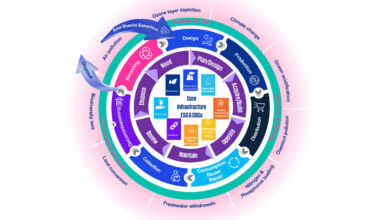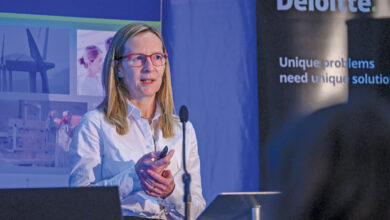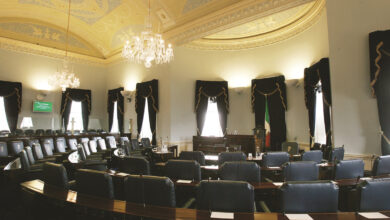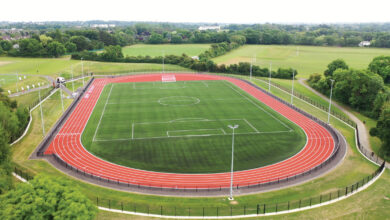Tourism in Limerick
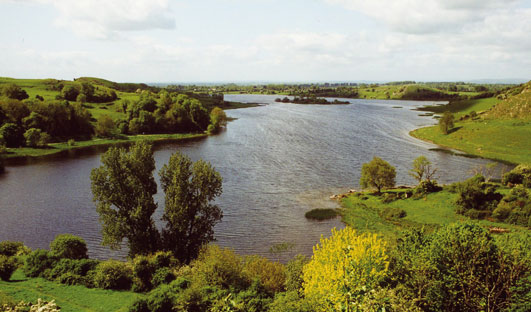
Limerick is in the penultimate year of its Limerick Tourism Development Strategy, developed by Limerick City and County Council. The 2019-2023 strategy envisages 1.1 million visitors to Limerick per annum, generating €360 million in revenue and creating 1,500 new jobs by 2023.
The framework for tourism in the Treaty City and County, which follows on from the success of Limerick’s reign as European City of Sport in 2011 and National City of Culture in 2014, is based around four areas that will “provide a solid foundation in terms of the attributes and assets of the destination on which to build”: waterways; activities; heritage; and arts and culture.
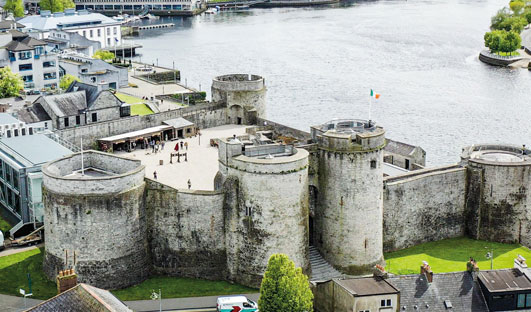
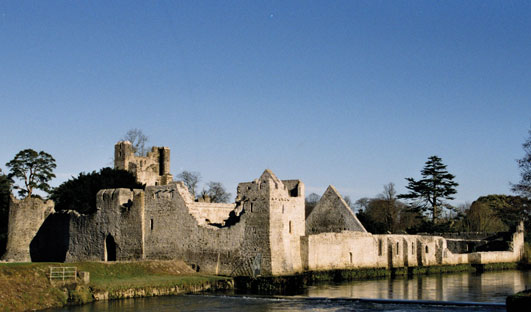
The objectives within the plan are broken down into four targets for the Council: ensuring that Limerick is “internationally and nationally recognised as a highly appealing tourism destination with a strong reputation for the quality of its water-based activity, arts and culture, and heritage attractions”; to ensure a “coordinated approach to tourism and to galvanise the enthusiasm of key actors”; to support growth in the local tourism sector; and to present a “delivery mechanism for national policies, objectives, and targets that offer the greatest potential for growing the tourism sector” in Limerick.
On a county level, Limerick generated revenue of over €307 million from tourism in 2017, with almost 931,000 visitors; from this starting point, the Council has set targets of reaching over 793,000 overseas visitors, generating €313.2 million of revenue, and 379,706 visits from Irish residents, generating €47.4 million in revenue, in 2023. With 205,000 jobs supported by the sector in 2017, the strategy aims to add 1,500 new jobs by 2023.
The unforeseen Covid-19 pandemic does of course caveat performance in this sector, but Limerick City and County Council has shown support for the sector’s recovery, with the Council’s 2022 approved budget including a Tourism Support Scheme 2022, support for tourism infrastructure projects under community development funding streams, and an estimated overall outturn of €2,233,757 for the year on tourism development and promotion.
Waterways
Limerick city’s position at the point where the River Shannon meets the sea and the multiple canals and rivers throughout the county such as the rivers Abbey, Feale, Aherlow, Mulcair, and Maigue mean that both county and city are well placed to benefit from recent upsurges in water sport-based tourism. Actions in this area mentioned in the plan include the development of a blueways masterplan setting in place a framework for prioritisation of infrastructural upgrades, working with tourism providers to develop itineraries on water, and exploring the possibility of hosting events such as the Tall Ships festival.
Included in the adopted 2022 budget for the Council is a River Shannon accessibility study, set for publication in Q2 2022, which will reflect Council work in tandem with Waterways Ireland to maximise accessibility to the river. Work on Lough Gur, a popular site for water sports such as kayaking and canoeing, will also continue through 2022, enhancing existing facilities on the site.
Activities
Actions included in the action plan under the activities heading include the completion of the Great Southern Greenway Limerick section and the development of Limerick as a venue for adventure sport tourism. The Council also pledges to explore the scope for sporting institutions such as the GAA and traditionally tourist friendly sports such as golf to contribute in this regard.
Most notable in the 2022 budget in this area are the commitments to building out the Limerick Greenway. 40km of upgrading and resurfacing work were complete on the greenway in 2021, 37km from Rathkeale to Abbeyfeale, and the remaining 3km to the Kerry border afterwards. Planning permission for an 80-space carpark for the Limerick Greenway Hub in Newcastle West has been obtained and station houses along the greenway have been purchased with the intention of using them as hubs. Works on seven underpasses and two overpasses are also expected to commence in Q3 2022.
Heritage
As one of Ireland’s counties with the most visible remnants of its history still intact – from King John’s Castle and St Mary’s Cathedral in the city to the medieval strongholds of Abbeyfeale, Newcastle West, Rathkeale and Adare, to Castle Desmond in Askeaton – the Council plans celebrate and showcase its heritage through “dynamic” use of existing venues and improving the visitor experience to existing centres and museums, as well as considering the feasibility of an Historic Quarter in the city.
During 2021, the Department of Housing, Local Government and Heritage, through the Council, allocated a total of €414,329 to heritage works and research projects in Limerick through the Built Heritage Investment Scheme (€141,600), the Historic Structures Fund (€135,429), and the Community Monuments Fund (€137,300).
Arts and culture
Actions included in the action plan to develop the arts and culture offering of Limerick include the advancement of proposals for a multi-purpose events centre in Limerick city, reviews of existing council-owned infrastructure such as Adare Heritage Centre, and the stimulation of cultural activity in public spaces through utilisations of pop-ups.
Limerick is currently operating under its Limerick Festivals and Events Strategy 2020-2030 and 2021 saw a total of €211,000 invested by the Council under its Festivals and Events Grant Scheme 2021/22, with 28 applicants approved for funding from a pool of 40 applicants asking for a total of €649,221.45.


